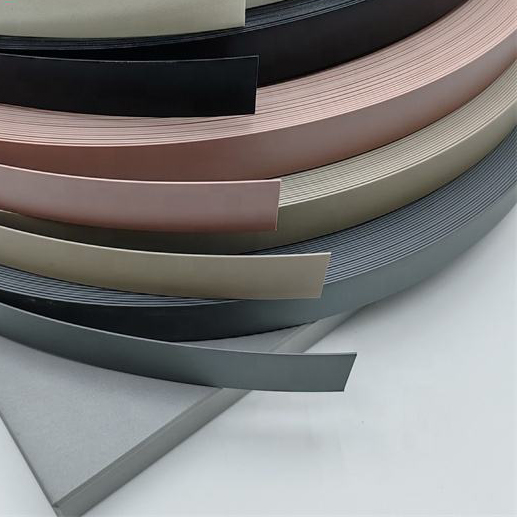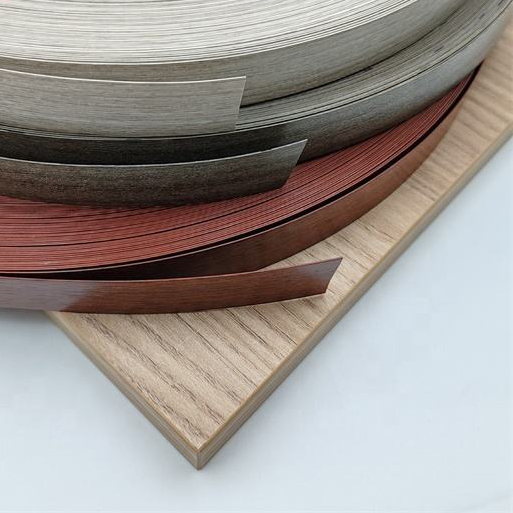Edge banding for plywood is a finishing technique used to cover and protect the exposed edges of plywood panels or other engineered wood products. Plywood is constructed by layering thin sheets of wood veneer and bonding them together with adhesive, resulting in a strong and versatile sheet material. However, the edges of plywood are typically rough and consist of multiple layers, which can be susceptible to damage, moisture absorption, and an unfinished appearance.

Edge banding serves several purposes:
- Protection: Edge banding provides a protective barrier to the vulnerable edges of plywood, preventing them from chipping, splintering, or becoming damaged over time.
- Aesthetics: It enhances the visual appeal of the plywood by covering the layered and unfinished edges, creating a clean and polished appearance.
- Durability: By encapsulating the edges, edge banding helps improve the overall durability and longevity of the plywood, making it more resistant to wear, moisture, and other environmental factors.
- Seamless Integration: Edge banding can create a seamless and smooth transition between the exposed edge of the plywood and the face of the panel, giving the appearance of a solid piece of wood.
Types of Edge Banding for Plywood:
- Veneer Edge Banding: This type of edge banding consists of thin strips of real wood veneer that are pre-glued or applied with adhesive. Veneer edge banding can be stained and finished to match the appearance of the plywood’s surface.
- PVC Edge Banding: Made from PVC (polyvinyl chloride), this type of edge banding is available in various colors and patterns. It offers excellent durability and moisture resistance.
- ABS Edge Banding: ABS (acrylonitrile butadiene styrene) edge banding is another synthetic option that provides good impact resistance and is available in different colors and finishes.
- Melamine Edge Banding: Melamine edge banding features a paper-based surface that is impregnated with melamine resin. It’s often used with melamine-coated plywood for a coordinated appearance.

Application of Edge Banding:
Applying edge banding to plywood typically involves the following steps:
- Cut the edge banding material to the appropriate length, leaving some excess on both ends.
- Apply heat (often using a specialized edge banding iron) to activate the adhesive on the banding material.
- Press the edge banding onto the exposed edge of the plywood, ensuring it is centered and aligned properly.
- Trim any excess edge banding material using a utility knife or a specialized edge trimmer.
- Sand the trimmed edge banding to create a smooth and seamless transition with the plywood surface.
Edge banding can be a cost-effective and visually appealing way to enhance the appearance and durability of plywood panels, making them suitable for a wide range of applications in furniture making, cabinetry, shelving, and interior design.
